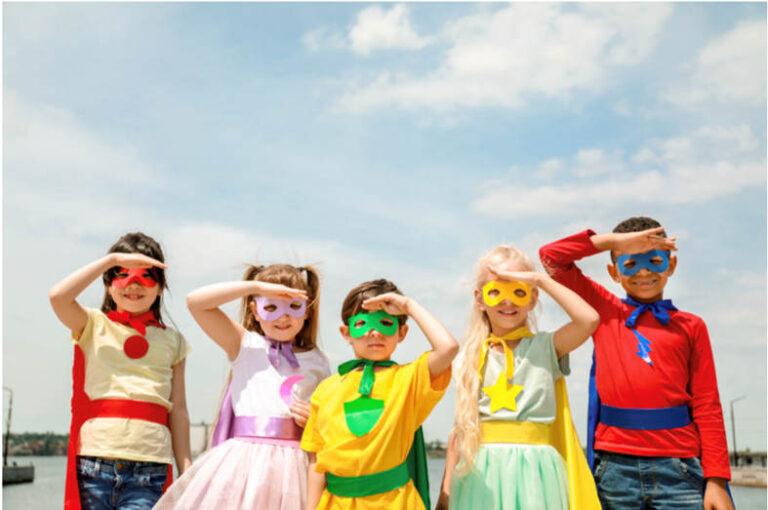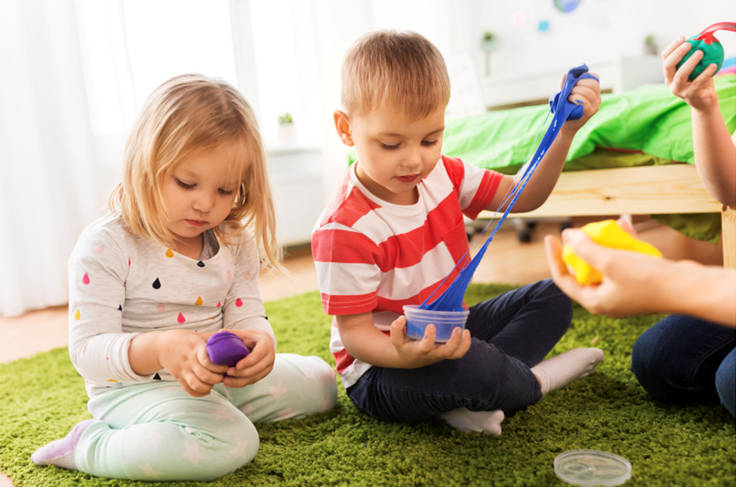How do you teach creativity? Well, creativity is a personal response. When we feel, see, hear or experience, our response can determine how we interact with what is in front of us. It’s the reason children can create fun from seemingly nothing, like a stick or fresh air.
Expressive arts and design activities for EYFS help to deepen creative responses. Your job as a practitioner is to ensure these activities have no right or wrong. And encourage children to interact, dance and create in any way they see fit.
What is expressive arts and design in the early years?
Expressive arts and design in the early years are one of the specific areas of learning. They are essential to build confidence, resilience and support children with wellbeing.
Developing a child’s cultural and artistic awareness helps with imagination and creativity. Creativity is a response to what a child feels, sees, hears, or experiences, so some children naturally gravitate towards creative tasks.
Children must have regular opportunities to interact with the arts, but what do we mean by ‘the arts’? Well, anything creative can be deemed art – it’s a subjective concept. But for this article, we’ll focus on the traditional outlets under the art umbrella: music, art, dance, movement and performance.
The aim of the game in early years is to develop a child’s imagination, creativity, self-expression, and communication through art.
It’s up to you how often, how repetitively, and how far you explore the arts with your babies and toddlers in nursery. However, the more you expose children to artistic and cultural experiences, the more they respond.
Why are expressive arts and design activities important with toddlers?
Aside from the obvious – that they are fun and nursery is all about finding the fun – expressive arts and design (EAD) activities help to develop a child right the way across the seven areas of learning and development.
- Natural opportunities to practice and learn new vocabulary
- Increased communication with other children and adults
- The chance to communicate without spoken word
- Multisensory learning helps children with sensory needs
- Activities support EAD EYFS learning across all seven areas
- Amazing experiences of the world around them
- Progression of fine and gross motor skills
- Self-expression is encouraged through the arts
What does the EYFS statutory framework say about expressive art and design?
The revision to the EYFS statutory framework has changed the Early Learning Goals (ELG) for expressive art and design.
The new Early Learning Goals for Expressive Arts and Design
Taken from the revised EYFS profile 2024 handbook, the ELG for Expressive Art and Design are:
Creating with materials
- Children can safely use and explore a variety of different materials, tools and techniques
- They can experiment with design, colour, texture, form and function of materials
- Children can share their creations, explaining their process to others
- Prop materials are used during role-play characters and narratives
Being imaginative and expressive
- Children show inventiveness, the ability to adapt and retell narrative stories with their friends and adults
- They can sing a range of nursery rhymes and songs
- Children can perform songs, rhymes, poems and stories in a group
- They can try to move in time with the music (in whatever they are compelled to do, there is no ‘correct’ way to dance!)

15 exciting expressive arts and design EYFS activities
You want your expressive arts and design activities to have a purpose, to give the children fun games and activities that are working towards ticking off those ELG at the same time. We share 15 of our favourite EAD EYFS activities.
Natural material painting
Go on a craft materials hunt on your next outdoor walk with the children. You can direct the children to find materials that fit a certain shape, colour or texture. For example, you may want to create artwork to represent the changing seasons and look for leaves to describe the change!
Perfume making
Another natural material activity: the children can create their own perfumes and potions using natural resources from your outdoor space or while wandering in your local area. Encourage the children to think about the colours they make, any smells they notice, and what the potion might be for.
Top Tip: This is a great time to encourage good hygiene when working with natural materials. If the children use any berries, they may want to wear gloves and monitor closely for any sneak taste tests!

Recycled collages
Some nurseries send a regular request for (clean!) recycled materials to parents. This reduces nursery spending for additional craft materials and helps promote environmentally friendly practices. Children can create collages from recycled magazines, boxes, and food wrappers.
Colour mixing
Children explore the colour wheel in primary school art, but before that stage, they should experiment with colours and how they interact. A non-messy EYFS activity to try with colour mixing involves a plastic wallet, some paints and eager hands!
Place large blobs of colour inside the plastic wallet and securely seal the plastic (some practitioners even use hair straighteners or strong Sellotape). The children can splat the colours, move them around and combine them to explore colour mixing (with zero clean-up!)
Clay modelling
This can be playdough or even air-drying clay if you want more permanent sculptures. Watch videos of sculptors creating with clay and invite the children to try for themselves. There doesn’t have to be a set shape they aim to create, just unleashed creativity.
Top Tip: Clay-making is an additional activity not expected with government-funded nursery places. These activities will be included in your additional consumables charges.

Create your own salt dough
Following an easy recipe, children can create their own salt dough. This is perfect for seasonal EYFS activities like Christmas or Mother’s and Father’s Day for a personalised keepsake. Encourage the children to notice the difference between salt dough, playdough, and other malleable materials.
Making your own slime
It’s very simple to make your own slime in nurseries, and it can even be edible! Slime can create a multisensory experience for children. Explore the different types of slime—they help to broaden sensory experiences, improve listening skills, and even help with creativity.

Vegetable stamping
Who knew a potato could be so versatile? Use solid vegetables like carrots, parsnips, potatoes and squash to create stamps for EAD activities. Some simple shapes you can try are circles, hearts, triangles, squares, rectangles and semi-circles.
Use a permanent marker to draw your shape before cutting the stamp (make your life easier by making the shapes large).
Sponge painting
Have you ever stopped to compare a dry and a wet sponge? We don’t blame you, nor did we, until we thought about this EAD activity idea. Explore the difference water can make to texture and use with a simple sponge.
Once you have explored both dry and wet, have a tuff tray with the dry and another with the wet sponges. Add them to some paint if you’d like to get those creative juices really flowing.
Palette restriction
The Department for Education (DfE) guidance on expressive art and design mentions palette restriction to add some variation to child-led creative play. Palette restriction can be used when exploring artists’ work.
For example, you can explore some images with one main colour and encourage the children to just create with that colour.

Musical statues
Music is a universal language, and there are no accessibility requirements for children to enjoy it. Children of any language, age, or ability can enjoy dancing and moving to the music. Some nurseries organise daily movement sessions into their timetables. With little prompting, the children can interact with the music however they want.
YouTube’s full of playtime music, and a single Now That’s What I Call Music CD will keep you going for years (though you might need to check lyrics first)!
This is an excellent recommendation for parents to try at home. Share videos of the children enjoying the music via your Blossom Parent App for inspiration for home activities.
Nursery rhymes
Nursery rhymes are naturally repetitive, which is why they are such a firm favourite with babies and toddlers just beginning their spoken language journey. Row, Row, Row Your Boat is one of the most-played nursery rhymes on YouTube.
Here are some well-known nursery rhymes to try to boost your EAD EYFS provision:
- Hickory Dickory Dock
- Humpty Dumpty
- Row, Row, Row Your Boat
- Old MacDonald Had a Farm
Makaton singing
Learning Makaton during nursery helps your setting promote its inclusive ethos and achieve its short—and long-term goals for inclusion. Modelling Makaton during nursery rhymes can help move the information into a child’s long-term memory due to the multi-sensory approach. Singing Hands UK has lots of videos for you to try with your children.
Act like a character in a book
Are you reading a story with your nursery children? Encourage them to act like the main characters in the book. If you can pair this with dressing up in your role–play area, that’s even better. Let their imaginations run wild.
Exploring textures
The thought of putting our hands into a bowl of water with tissue paper in might make you feel queasy. But exploring different textures is a key part of building expressive arts and design experiences. Think about the different materials your children have encountered.
Want to mix it up further? See if your nursery children can interact with some of their well-known materials blindfolded. Feeling kitchen foil, velvet, bubble wrap, and even slime without your sight to rely on can be a game changer for sensory experiences.
Early years activities should be designed to motivate children to enjoy new experiences. Gathering inspiration from online sources (like our blog!) can help you introduce new, exciting learning opportunities and save yourself some planning time, too.
For more brilliant EYFS activities, check out our Ultimate guide to EYFS activities blog post and easily cover the seven areas of learning and development!